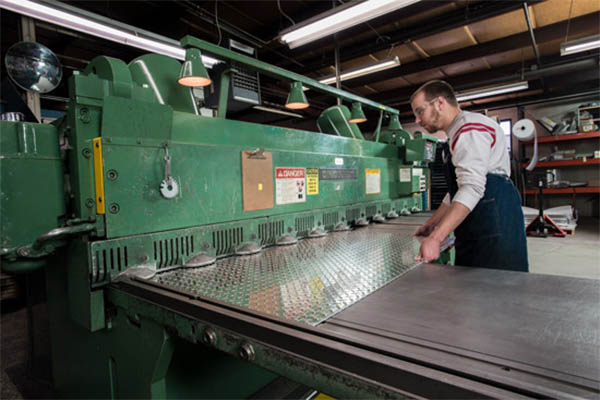You may have heard of Prototype Sheet Metal Fabrication, but how does it work?
According to Marinus Nutma with TechZone360:
“Designers having prototypes made for their clients to view and hold has become a normal part of the designing process. Physical models are much easier to explain and understand than a drawing. Prototypes have become invaluable in making design changes in order to save both time and money in the manufacturing and assembly processes.
“Sheet Metal Prototyping
“Most products and parts that are being prototyped today are being done on a 3D printer. This is due to the fact that prototyping on a 3D printer is usually quicker and cheaper than a CNC tooling machine or with injection molding. It is also true that these parts will be manufactured by one of these processes.
“But it is also prudent that products manufactured with sheet metal fabrication also use sheet metal prototyping. Is the product the right size? Are all of the angles correct? Do the holes line up with anchor points? Will the product accomplish its intended purpose? Holding a physical product in your hand and trying it for its intended use will assure you of its design. That is shrewder than discovering a design flaw after manufacturing.
“Sheet Metal Materials for Prototyping
“Various metals are available for prototyping sheet metal products, and in various grades. You may want to choose a cheaper metal for your prototype than the one that will be used for production. Stock metals include:
- Aluminum: 5052-H32; 6061-T6
- Stainless steel: 304; 316
- Galvanized steel
- Galvannealed steel
- Cold rolled steel
- Copper: C101; C110
- Brass: CDA 260
“Remember that sheet metal parts are normally made from a single piece of sheet metal. Therefore, the part must maintain a uniform wall thickness. Having two thicknesses welded together will add to the overall costs.
“Also, when choosing a metal for the final production run, think about the environment the part will be subjected too. You also will want to consider mechanical properties and the cosmetic appearance you desire.
“Tolerances Held for Sheet Metal Fabrication
“Tolerances held on sheet metal fabrication are dependent on the feature effected, such as holes, bends, and offsets.
Standard angular tolerance: +/- 1 degree
edge to edge: +/- 0.005 in.
hole diameter: +/- 0.005 in.
hole to hole: +/- 0.005 in.
bend to bend: +/- 0.015 in.
bend to hole: +/- 0.030 in.
bend to edge: +/- 0.020 in.
“The above tolerances are for some basic part features. You can get a more complete tolerance list from your manufacturer for the complexity of your part.
“Because of the angles and bends and the tolerances you have to work within, it is a wise decision to have a prototype made and verify its usability.
“Surface Finishes for Sheet Metal Fabrication
“If cosmetics are important for your project, then the finish would be of concern to you. A prototype will give you the best indication of how the finished product will look. A variety of colors are available using a powder coat painting process…”






